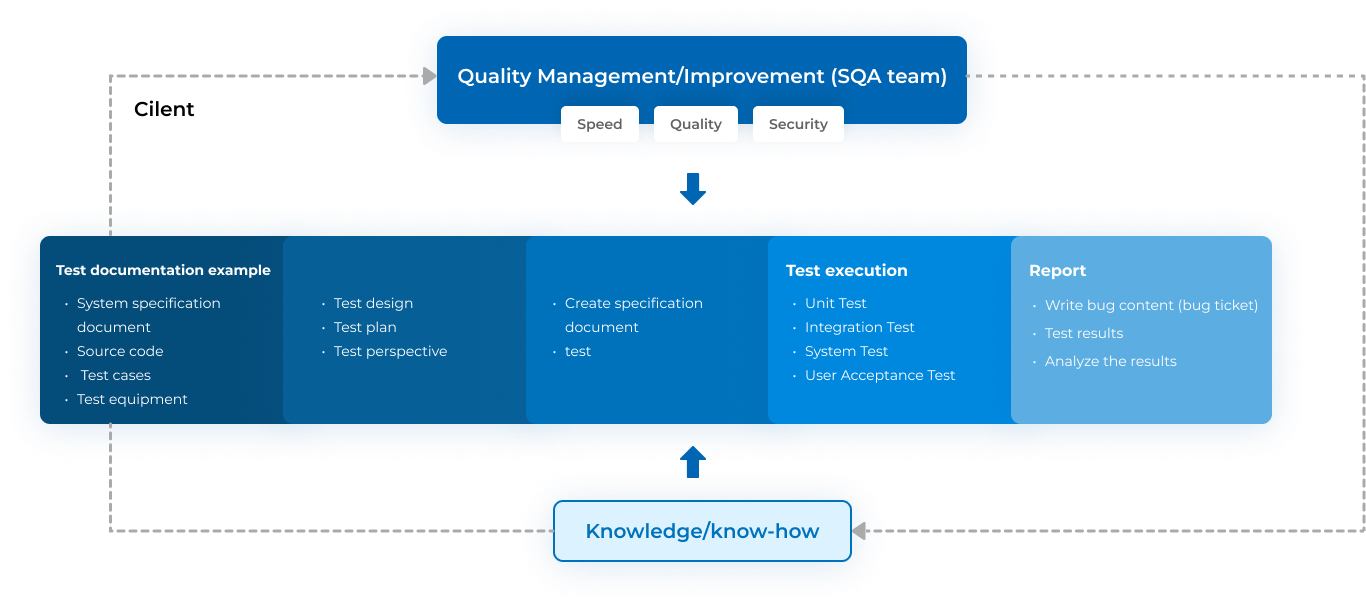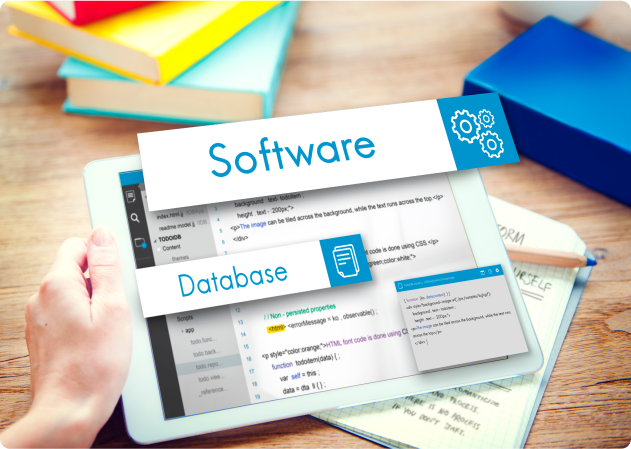



Depending on customer needs, we can provide software testing service from design to implementation
 01
01Customer provides the requirements definition documents and the tester, based on the requirements definition, understands the requirements, creates specifications, and performs testing.
 02
02Customer provides existing system applications without any accompanying documents, and the tester analyzes the system through various channels, creates testing specification documents, and performs testing based on practical experience.
 03
03Testing is carried out using documents provided by the customer. However, based on their testing perspective, the tester extracts issues unsuitable for suitable with the testing specification documents and discovers errors not described in those documents.
We have extensive experience testing on different platforms such as Web, smartphone, desktop and cloud computing.

Depending on the requirements of the customer and the characteristics of different projects, the team applies automation testing or manual testing.
Depending on the requirements of the customer and the nature of different projects, the team may apply either Automation Testing or Manual Testing.
For long-term stable projects with predetermined technical characteristics and functions that are unlikely to change in the future (especially maintenance projects), where testing is repeated in many different environments, Automation Testing will be applied. Conversely, for projects with short development time and low cost, we choose Manual Testing.
However, for some special projects where it is necessary to validate fixed test cases applied to all screens when the system moves from the old version to the new version, we choose Automation Testing to increase productivity.
In this case, the productivity of Automation Testing can be 1.5 to 3 times higher than that of Manual Testing.




